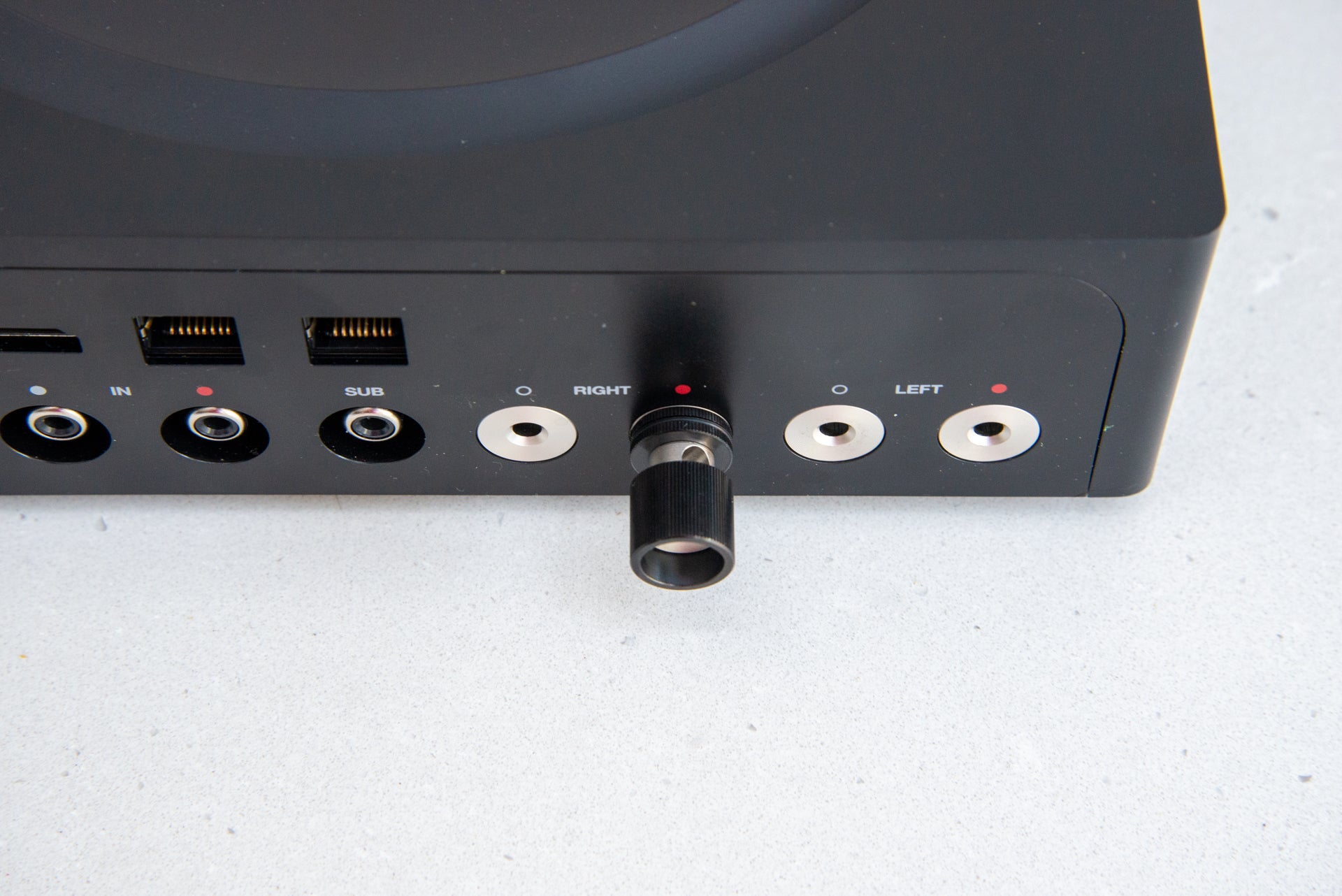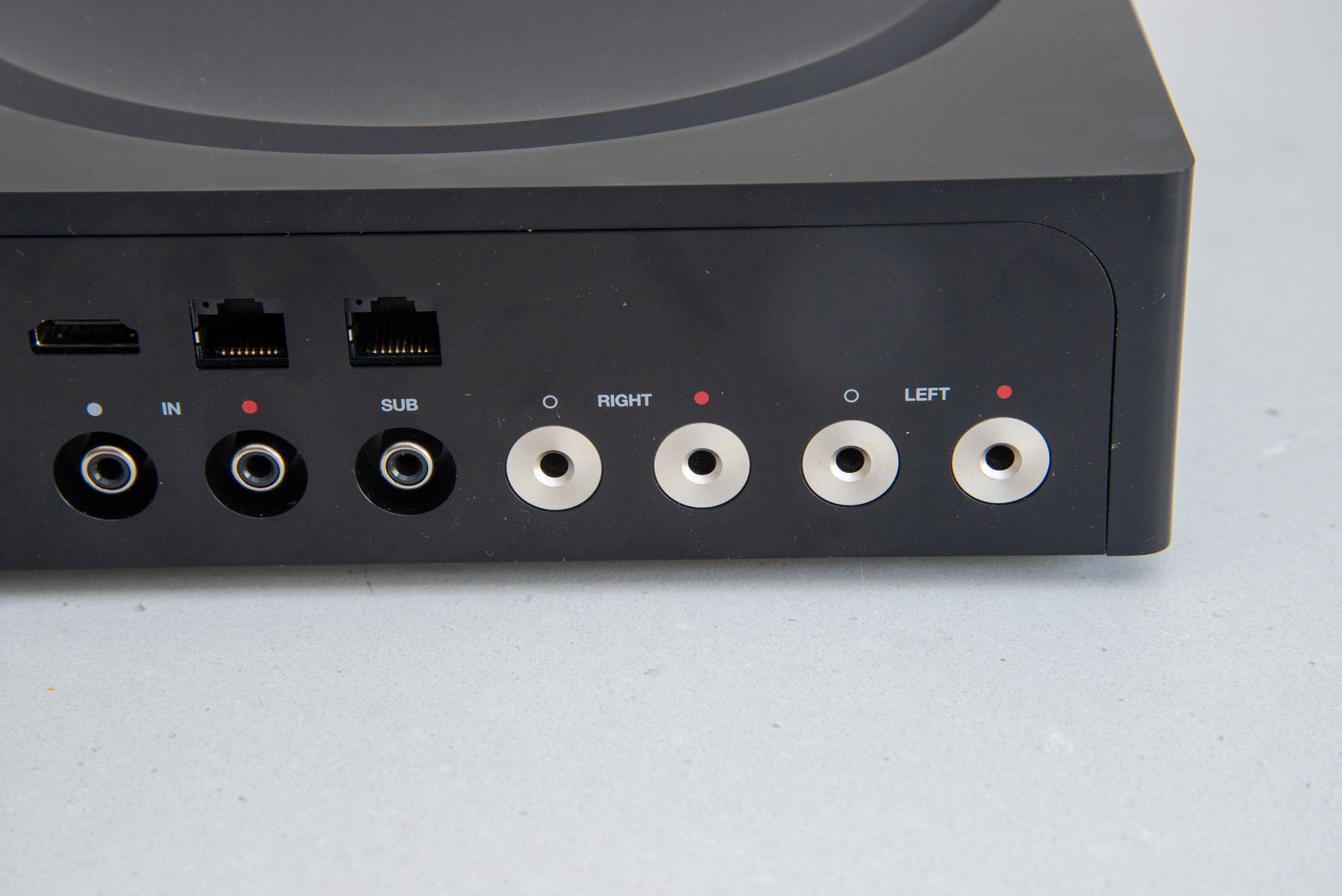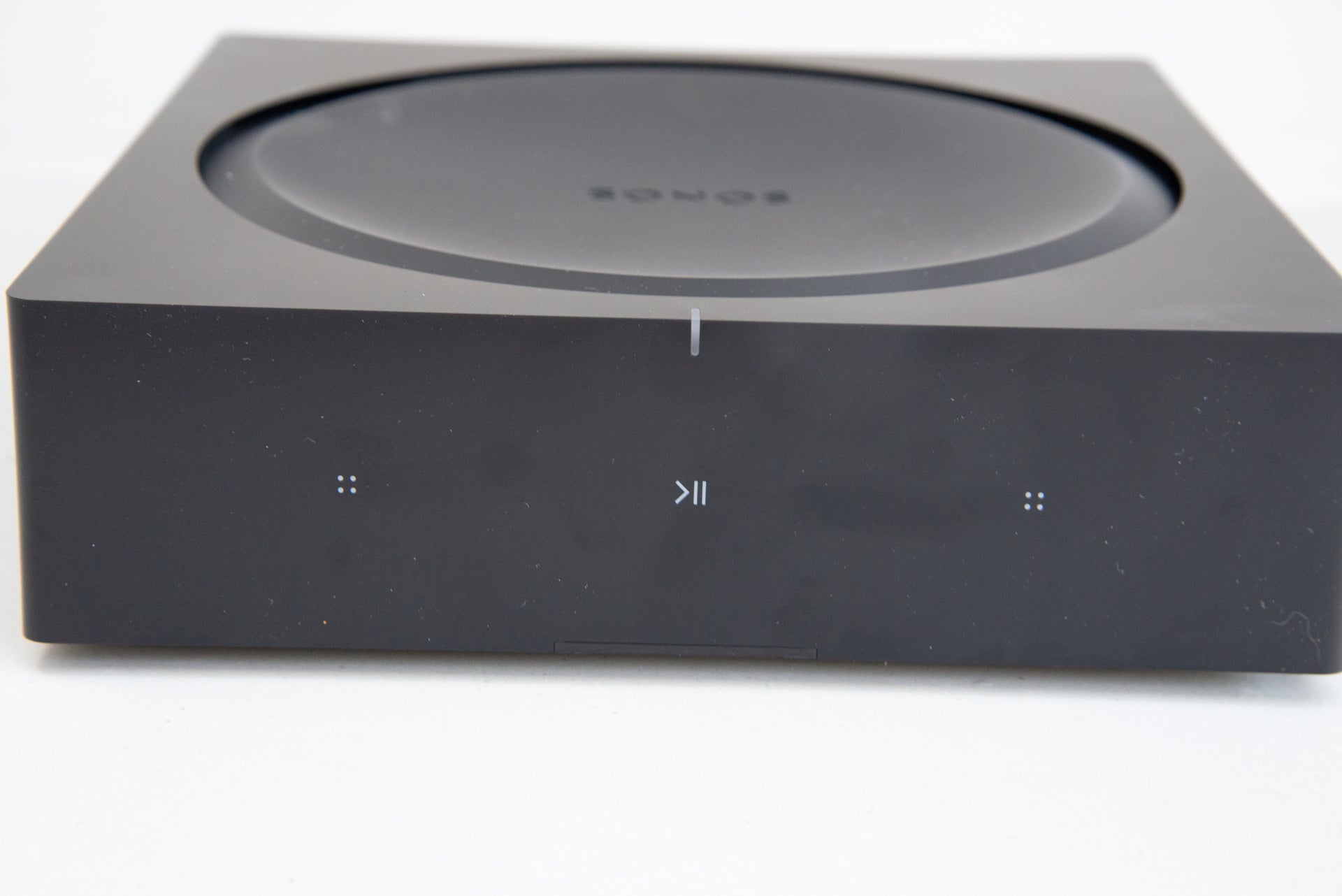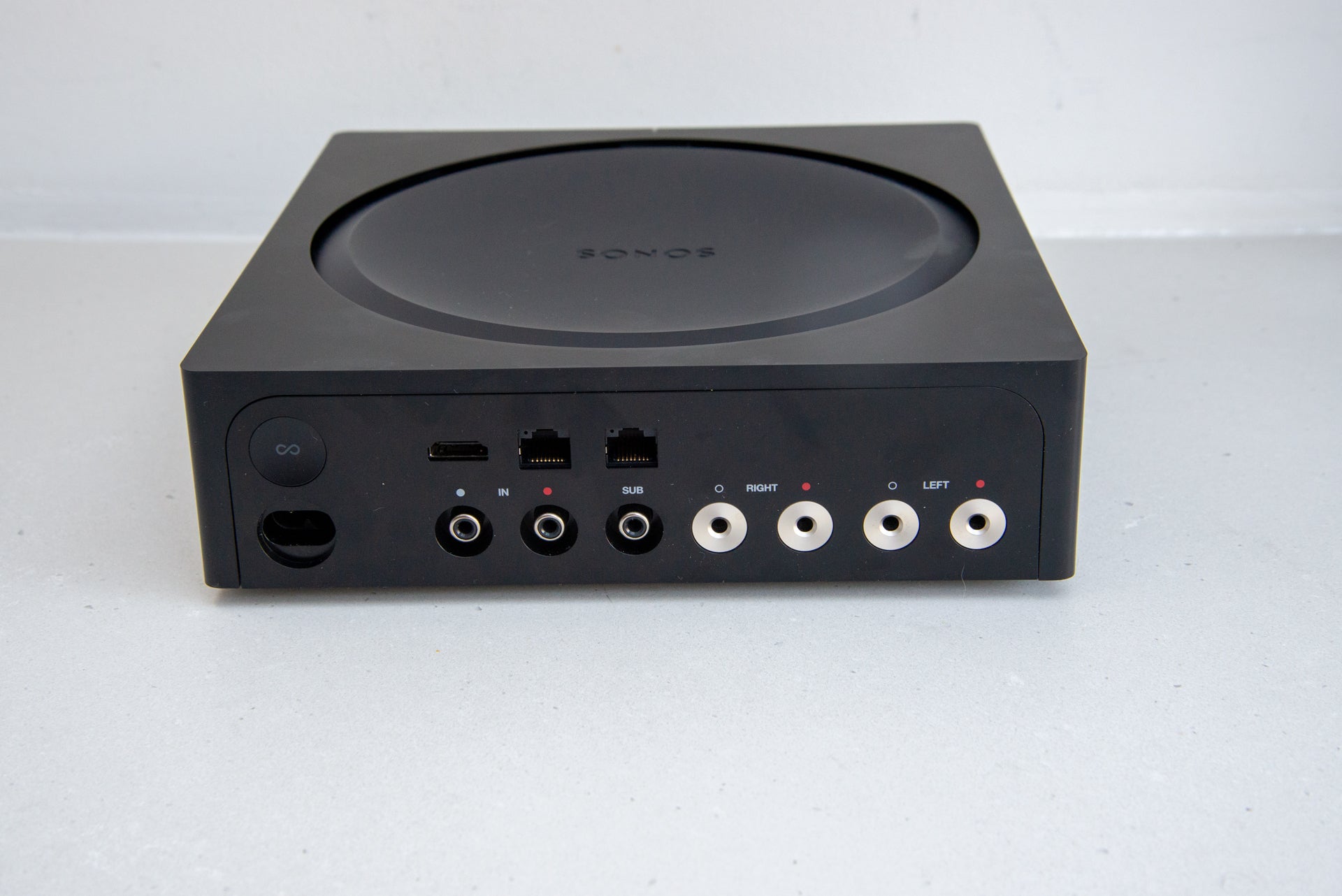Sonos Amp Review
Sonos Amp Review
The most flexible wireless amplifier available

Verdict
A powerful amplifier, the Sonos Amp has the capability to be the best-sounding wireless speaker in the line-up, assuming you pair it with a decent set of speakers. This amplifier brings much-needed flexibility to the range, whether you want something to play vinyl through or want hidden speakers. Arguably, you can get slightly better stereo speakers for less, but you won't get the same flexibility that the Sonos ecosystem delivers. A touch niche, then, but if you need it, the Sonos Amp is the best multiroom amplifier available.
Pros
- Flexible choice of speakers
- Powerful and rich audio
- Works well with vinyl
- Decent TV audio
Cons
- Expensive
- No Trueplay with most speaker choices
Key Specifications
- Review Price: £599
- AirPlay 2
- Class D amplifier (125W per channel)
- Phono, optical and HDMI ARC inputs
- Requires external speakers
- Sonos S2 compatible
- Trueplay tuning (Sonos Architectural speakers only)
While Sonos’ other speakers are plug-and-play, designed as much for convenience as for sound quality, the Sonos Amp is a different proposition.
Built to be a beautiful bit of hi-fi kit in its own right, it gives you the choice of which speakers you want to use, throws in an HDMI ARC port for TV watching, and even has audio inputs for a turntable.
It’s an expensive purchase, for sure, but quality audio and the flexibility the Amp delivers as part of the Sonos system will make it the right choice for those that need it.
Sonos Amp design and features – Neat and compact with all the inputs you’ll need
- Smaller and more powerful looking than the old model
- HDMI ARC and analogue inputs
- Can power up to four speakers
Replacing the old Connect:Amp, the new Sonos Amp is the more powerful product, but it’s smaller and neater than the original. Housed inside a small, black cuboid box (64 x 217 x 217mm), the Sonos Amp blends into its surroundings.
Inside there’s a Class D 125W per channel (at 8-ohms) amplifier, up from the 55W per channel of the old product. This, coupled with the smaller case, could introduce some heat issues, but the case is designed to draw air up from below, through the passive heatsink and out the top.

At the rear you get four banana plug inputs for speakers of your choice. You can run 4-ohm and higher speakers through it
and can connect two pairs of speakers if you want to run additional speakers either in the same room or elsewhere.

You can use your own speakers, although the new Sonos Architectural Range (in partnership with Sonance) gives you a choice of in-wall, in-ceiling and in-garden options. Clearly aimed at custom installers, the Amp is the best choice if you want to have a hidden installation.
Using the Architectural Range has two advantages over using your own speakers: you can wire in three pairs of speakers and use Trueplay to automatically tune your system. Sonos says the variance of speakers available mean it can’t offer Trueplay. It’s a shame and it feels as though there should be a way around the problem if Sonos put its mind to it, particularly as it’s very likely that many people that buy the Sonos Amp will buy their own speakers.
You can connect a subwoofer, either going for the wireless Sub or by using the subwoofer output to hook up your own. You get stereo phono inputs for a turntable (or another audio source), although there’s no pre-amp on the Amp. You’ll either need a turntable that has one or invest in one yourself. As with all newer Sonos products, there’s Airplay 2 support.

There’s also an HDMI ARC input on the rear so that you can connect the Amp to your TV and use it in place of the external speakers. Note that this model is just ARC, not eARC as on the Sonos Arc, so the best audio you can get is Dolby Digital rather than Dolby Atmos. As such, the Amp isn’t really a replacement for a proper sound system, but a handy tool if in reach of a second TV.
Sonos uses a phantom centre channel for delivering the audio track, but you can also add a pair of other wireless speakers if you want rear channels. This makes the Sonos Amp a very expensive home cinema system for something so basic; I’d go for the Sonos Beam or Sonos Arc if your primary need is TV.
You can set the Amp to autoplay from its inputs, so there’s no need to fiddle about with the app every time you want to play vinyl or watch TV.
On the front you get the now standard Sonos touch controls, which let you adjust volume, play/pause and skip tracks. There’s also an IR input so that you can pair a universal or TV remote.

Of course, as this is a Sonos player, you get the full multi-room experience, with the Amp able to join groups with other speakers. All audio inputs, including vinyl and TV, can be streamed to other rooms, too.
Although the Amp launched as a Sonos S1 product, it is fully compatible with S2, so can join newer systems. All products are shipped with S1 installed, but the Amp automatically upgrades to S2 when it joins a new system.
You can connect the Sonos Amp via Wi-Fi, but there are two 100Mbps Ethernet ports on the rear if you want to go wired, letting you daisy-chain multiple Amps together. If you wire one Sonos device, then the others use the older SonosNet network (a proprietary mesh system), so think about what’s best in your home before you use wired networking.
Sonos Amp performance – Rich and detailed with a lot of power
- Quality depends on the speakers you use and there’s limited TruePlay support
- Capable of a level of detail that exceeds other Sonos speakers
- Incredible sound and flexible range of inputs
Sound quality from the Sonos Amp will change dramatically depending on the speakers that you pair with it. I used a pair of Paradigm Monitor SE Atom bookshelf speakers. Right out of the box, there’s not quite as much detail as I’d like, and you should spend some time in the audio settings.
As with other Sonos speakers, there’s only a slider for controlling bass and treble, plus a loudness switch that’s on by default. It’s worth toggling loudness to see if you prefer the sound with this off, but it’s not as pronounced an effect as with the other wireless Sonos speakers.
Ideally, I’d like the ability to fine tune the speakers with more detailed controls. After all, this is a speaker aimed at Hi-Fi enthusiasts, and what control you do get is basic at best.
Still, with what you can control, the Sonos Amp has the capability to be the best-sounding Sonos speaker in the line-up. With separate speakers, you immediately get better stereo separation. Play Enough Space by Foo Fighters, and the intro guitars swirl effectively around you.
There’s plenty of range in the system, too. Rage Against the Machine’s Bomb Track starts with that heavy-hitting bass intro before the drums and guitar kick in with a massive thump. There’s punch and attack to the playback that pulls you in.
While many amps are geared for those louder, larger tracks, they need to deliver on quieter tracks, too, and the Sonos Amp copes well here, too. Play something more gentle, such as Debussy’s Clair De Lune, and the piano is altogether more gentle and calm.
Nothing is missed in the broad range that the Amp can deliver but for all it can do, it misses out on some of the subtleties that the best amplifiers can deliver. Play Johnny Cash’s Hurt and you don’t quite get the full detail of his fingers slider across his guitar strings.
One of the primary reasons for getting the Sonos Amp is to hook up a turntable to play music. While it’s true that you can hook up a record player to any Sonos player with a line-in, such as the new Sonos Five, the Amp has the advantage that you can use speakers better suited to the format. Sure enough, playing vinyl on the Amp is a more natural experience than on other Sonos players.
There’s an analogue-to-digital conversion that happens (so that the Amp can send the audio to other rooms), but it feels and sounds natural. If anything, there’s a little bit of detail and nuance that’s lost, but it’s still a satisfying experience being able to listen to an old format via a cutting-edge bit of tech.
When compared to the best stereo amps, the difference is subtle, and the Amp is a very high-quality bit of kit, it’s just that you can get marginal improvements with some other dedicated stereo amplifiers.
If you hook up a TV via HDMI ARC, then you’ll be impressed with what you get. As the amplifier is HDMI CEC compatible, your TV’s volume control automatically adjusts the Amp’s volume. If your TV doesn’t have HDMI ARC, then you can buy the Sonos HDMI-to-optical adaptor and use that instead.

I was ready for muffled and distorted audio, but the phantom centre speaker is really very good. Using the Amp is a big improvement over built-in TV speakers, with clear dialogue and more punch and attack to soundtracks and effects. If you’ve got the AMP in the same room as a TV that doesn’t have its own quality speakers, then definitely use it; if you want the best quality experience and support for higher-quality audio formats, you’ll want a dedicated soundbar.
Sonos Amp Conclusion
Like the model before it, the Sonos Amp is a rather niche and specialist product. If you want to go for a hidden installation or have a desire to use your own quality speakers, then it makes a lot of sense to buy this. Easily the best-sounding Sonos wireless speaker, the Amp has impressive range and power.
You can get slightly better stereo amplifiers for less, although you miss out on the Amp’s multi-room quality and brilliant app. If you’ve got a house full of Sonos equipment already and want a dedicated amplifier that you can pair a set of speakers with for a more Hi-Fi-like experience, then this is clearly the product for you. In short, if you specifically need the Amp, then it’s a brilliant product, but it’s a little expensive and quite niche.


